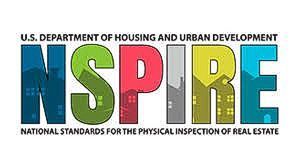Understanding the Difference Between REAC and NSPIRE
Understanding the Difference Between REAC and NSPIRE: Insights from REAC NSPIRE Consulting

Navigating the landscape of property inspections can be challenging, especially with the various standards and protocols in place. Two prominent inspection systems you might encounter are REAC and NSPIRE. At REAC NSPIRE Consulting, we aim to clarify these systems to help property owners and managers understand their differences and implications.
What is REAC?
The Real Estate Assessment Center (REAC) is an entity within the U.S. Department of Housing and Urban Development (HUD) that conducts inspections of HUD-affiliated properties. The primary objective of REAC inspections is to ensure the safety, security, and health of residents by maintaining the property standards.
Key Features of REAC Inspections:
- Uniform Physical Condition Standards (UPCS): REAC inspections follow UPCS, focusing on the physical condition of the property.
- Scoring System: Properties receive a score based on the inspection results, which can affect funding and compliance status.
- Frequency: Inspections occur regularly, with the frequency depending on the property's previous inspection scores.
- Focus Areas: REAC evaluates various components, including building exteriors, systems (plumbing, electrical), common areas, and individual units.
What is NSPIRE?
The National Standards for the Physical Inspection of Real Estate (NSPIRE) is an evolving inspection model also under HUD. NSPIRE aims to enhance and modernize the existing REAC inspection protocols to improve the overall quality of HUD housing.
Key Features of NSPIRE Inspections:
- Resident-Centric Approach: NSPIRE emphasizes health and safety conditions that directly impact residents.
- Three-Tiered Protocol: The inspection model includes physical inspections, self-inspections, and third-party inspections.
- Scoring and Standards: While similar to REAC, NSPIRE introduces updated standards and a more detailed scoring system to reflect the current living conditions accurately.
- Pilot Programs and Feedback: HUD has been piloting NSPIRE to gather feedback and refine the system before full implementation.
Key Differences Between REAC and NSPIRE
Understanding the distinctions between REAC and NSPIRE is crucial for property managers and owners. Here are the main differences:
Inspection Standards and Focus:
- REAC: Utilizes UPCS, primarily focusing on the physical conditions and maintenance needs.
- NSPIRE: Incorporates a resident-centric approach, emphasizing health, safety, and functional living conditions.
Scoring Systems:
- REAC: Scores are based on physical conditions, with significant emphasis on the property's exterior and systems.
- NSPIRE: Introduces a more comprehensive scoring system that considers both physical conditions and resident impact.
Inspection Process:
- REAC: Inspections are conducted by HUD inspectors, with scores affecting inspection frequency.
- NSPIRE: Involves a three-tiered protocol, including physical, self, and third-party inspections, fostering a collaborative approach to property management.
Implementation and Evolution:
- REAC: Established and consistent, with well-defined procedures.
- NSPIRE: Currently in pilot phases, allowing for feedback and iterative improvements before full-scale implementation.
Preparing for REAC and NSPIRE Inspections
Whether your property is subject to REAC or NSPIRE inspections, preparation is key. Here are some steps to ensure compliance:
- Regular Maintenance: Conduct routine maintenance to address any issues promptly.
- Resident Engagement: Encourage residents to report maintenance needs and ensure their living conditions meet safety standards.
- Documentation: Keep detailed records of inspections, repairs, and maintenance activities.
- Professional Assistance: Engage with professionals like REAC NSPIRE Consulting to guide you through the inspection process and help you meet all standards.
Understanding the differences between REAC and NSPIRE inspections is essential for effective property management and ensuring compliance with HUD standards. At REAC NSPIRE Consulting, we are committed to helping property owners and managers navigate these inspection systems with ease. Contact us for expert guidance and support in preparing for both REAC and NSPIRE inspections or both REAC and NSPIRE consulting.








